-
 Bitcoin
Bitcoin $84,380.9629
-0.68% -
 Ethereum
Ethereum $1,587.8040
0.39% -
 Tether USDt
Tether USDt $0.9997
0.02% -
 XRP
XRP $2.0611
-0.10% -
 BNB
BNB $592.1695
0.41% -
 Solana
Solana $134.0171
-0.42% -
 USDC
USDC $1.0000
0.00% -
 Dogecoin
Dogecoin $0.1576
1.44% -
 TRON
TRON $0.2401
-3.06% -
 Cardano
Cardano $0.6295
2.16% -
 UNUS SED LEO
UNUS SED LEO $9.2244
1.69% -
 Chainlink
Chainlink $12.5592
0.40% -
 Avalanche
Avalanche $19.0618
0.03% -
 Toncoin
Toncoin $2.9920
1.85% -
 Stellar
Stellar $0.2398
0.17% -
 Shiba Inu
Shiba Inu $0.0...01228
4.28% -
 Hedera
Hedera $0.1653
1.46% -
 Sui
Sui $2.1201
-0.04% -
 Bitcoin Cash
Bitcoin Cash $335.2957
0.47% -
 Polkadot
Polkadot $3.6693
0.93% -
 Litecoin
Litecoin $75.9657
1.55% -
 Hyperliquid
Hyperliquid $17.0326
-0.70% -
 Dai
Dai $1.0000
0.01% -
 Bitget Token
Bitget Token $4.4071
0.71% -
 Ethena USDe
Ethena USDe $0.9992
0.02% -
 Pi
Pi $0.6423
4.69% -
 Monero
Monero $215.4419
-0.65% -
 Uniswap
Uniswap $5.1801
0.13% -
 Pepe
Pepe $0.0...07322
1.11% -
 OKB
OKB $50.2807
-0.70%
What are dYdX's margin trading rules?
dYdX offers margin trading with up to 5x leverage on pairs like BTC-USD and ETH-USD, but traders must maintain adequate collateral to avoid margin calls and liquidation.
Apr 13, 2025 at 04:42 pm

dYdX is a decentralized platform that offers margin trading among its suite of financial services. Understanding the margin trading rules on dYdX is crucial for traders looking to leverage their positions in the cryptocurrency market. This article will delve into the specifics of dYdX's margin trading rules, providing a comprehensive guide for users.
Understanding Margin Trading on dYdX
Margin trading on dYdX allows users to borrow funds to increase their trading position, potentially amplifying both gains and losses. The platform supports trading with up to 5x leverage on certain pairs, which means traders can borrow up to four times their initial investment. This feature is particularly attractive to those looking to maximize their exposure to the market without committing additional capital upfront.
Eligibility and Account Setup
To engage in margin trading on dYdX, users must first set up an account. Here are the steps to get started:
- Visit the dYdX website and click on the "Sign Up" button.
- Connect your wallet. dYdX supports various wallets such as MetaMask, Coinbase Wallet, and others. Choose your preferred wallet and follow the prompts to connect it.
- Complete the KYC (Know Your Customer) process. While dYdX is a decentralized platform, it may require KYC for certain features, including margin trading. Follow the instructions to submit the necessary documentation.
- Deposit funds into your dYdX account. You can deposit cryptocurrencies supported by the platform, such as ETH, USDC, or other tokens.
Once your account is set up and funded, you can proceed to the margin trading section of the platform.
Leverage and Margin Requirements
dYdX offers different levels of leverage depending on the trading pair. For instance, BTC-USD and ETH-USD pairs may offer up to 5x leverage, while other pairs might have different limits. The margin requirement is the amount of collateral you need to maintain in your account to keep your position open. If the value of your collateral falls below this requirement, you may face a margin call.
To calculate the margin requirement, dYdX uses the following formula:
[ \text{Margin Requirement} = \frac{\text{Position Value}}{\text{Leverage}} ]
For example, if you want to open a $10,000 position with 5x leverage, your margin requirement would be:
[ \text{Margin Requirement} = \frac{10,000}{5} = 2,000 ]
This means you need to have at least $2,000 in your account to maintain the position.
Margin Calls and Liquidation
A margin call occurs when the value of your collateral falls below the maintenance margin requirement. When this happens, dYdX will notify you to either deposit more funds or close part of your position to meet the requirement. If you fail to act, the platform may automatically liquidate your position to prevent further losses.
Liquidation is the process where dYdX closes your position to recover the borrowed funds. The platform uses a liquidation engine to ensure that positions are closed at the best possible price, minimizing the impact on the market. It's important to monitor your positions closely and maintain adequate collateral to avoid liquidation.
Trading Fees and Interest Rates
dYdX charges trading fees for margin trades, which are typically a small percentage of the trade value. These fees can vary depending on the trading pair and the volume of trades. Additionally, when you borrow funds for margin trading, you will incur interest rates on the borrowed amount. The interest rates are variable and can change based on market conditions.
To view the current fees and interest rates, you can:
- Navigate to the dYdX trading interface.
- Select the trading pair you are interested in.
- Check the "Fees" and "Interest Rates" sections for the most up-to-date information.
Risk Management Strategies
Effective risk management is essential when engaging in margin trading. Here are some strategies to help you manage your risks:
- Set stop-loss orders. These orders automatically close your position if the price reaches a certain level, helping to limit potential losses.
- Diversify your portfolio. By spreading your investments across different assets, you can reduce the impact of a single asset's price movement on your overall portfolio.
- Monitor your positions regularly. Keep an eye on your margin levels and be prepared to add more collateral or close positions if necessary.
- Start with lower leverage. If you are new to margin trading, consider starting with lower leverage to gain experience and understand the market dynamics better.
Frequently Asked Questions
Q: Can I use any cryptocurrency as collateral for margin trading on dYdX?
A: dYdX supports a variety of cryptocurrencies as collateral, but not all tokens are eligible. You can check the platform's documentation or the trading interface to see which cryptocurrencies are accepted for margin trading.
Q: How quickly does dYdX execute a liquidation?
A: dYdX's liquidation engine is designed to act swiftly to minimize losses. The exact timing can vary based on market conditions, but the platform aims to execute liquidations as quickly as possible to protect both the trader and the platform.
Q: Are there any limits on the size of margin trades I can make on dYdX?
A: Yes, dYdX may impose limits on the size of margin trades based on various factors, including your account's history, the trading pair, and overall market conditions. You can find more information on these limits within the platform's trading interface or documentation.
Q: Can I withdraw my collateral while I have an open margin position?
A: Generally, you cannot withdraw your collateral while you have an open margin position, as it is used to secure your borrowed funds. If you need to access your collateral, you will need to close your position first.
Disclaimer:info@kdj.com
The information provided is not trading advice. kdj.com does not assume any responsibility for any investments made based on the information provided in this article. Cryptocurrencies are highly volatile and it is highly recommended that you invest with caution after thorough research!
If you believe that the content used on this website infringes your copyright, please contact us immediately (info@kdj.com) and we will delete it promptly.
- 5 Cryptos That Aren't Sleeping Anymore. From Wall Street Warming Up to Tokenized Assets
- 2025-04-19 07:20:13
- Litecoin (LTC) Returns to Familiar 10x Territory: How High Could It Go This Time?
- 2025-04-19 07:20:13
- Hashkey Group is Moving to Increase its Presence in the Growing ETF Market of Asia. By Launching an XRP-Targeted Fund
- 2025-04-19 07:15:13
- Berachain (BERA) Price Crashes to a Record Low as Stablecoins in Its Ecosystem Continue Their Recent Plunge
- 2025-04-19 07:15:13
- United States asset manager Canary Capital has filed to list an exchange-traded fund (ETF) holding the Tron blockchain network's native token
- 2025-04-19 07:10:13
- XRP price hovers above $2.08 as traders weigh conflicting signals from spot and derivatives markets, suggesting short-term indecision.
- 2025-04-19 07:10:13
Related knowledge
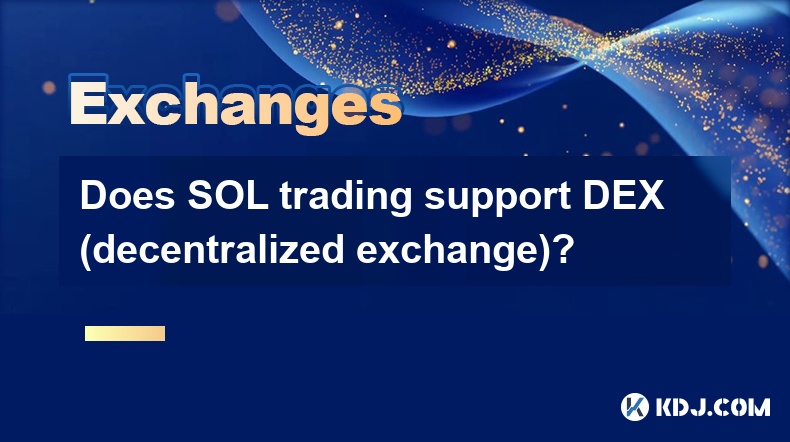
Does SOL trading support DEX (decentralized exchange)?
Apr 19,2025 at 05:21am
Solana (SOL), a high-performance blockchain platform, has gained significant attention in the cryptocurrency community for its fast transaction speeds and low fees. One of the key aspects that traders and investors often inquire about is whether SOL trading supports decentralized exchanges (DEXs). In this article, we will explore this topic in detail, p...
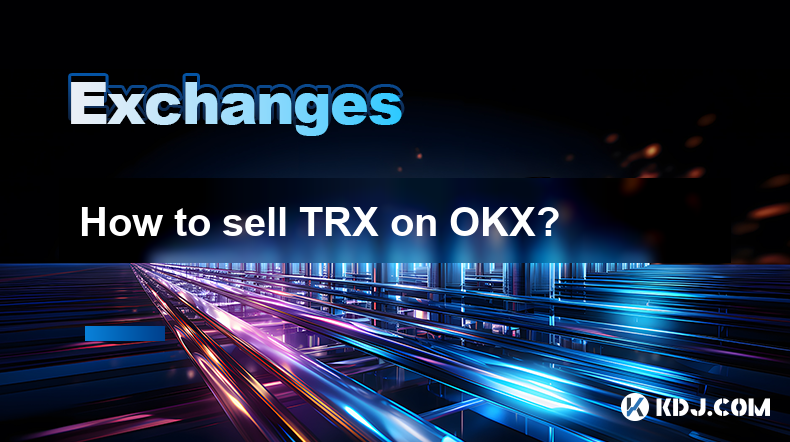
How to sell TRX on OKX?
Apr 18,2025 at 11:07pm
Selling TRX on OKX is a straightforward process that can be completed in a few simple steps. This article will guide you through the entire process, ensuring that you understand each step thoroughly. Whether you are a beginner or an experienced trader, this guide will help you navigate the OKX platform with ease. Preparing to Sell TRX on OKXBefore you c...
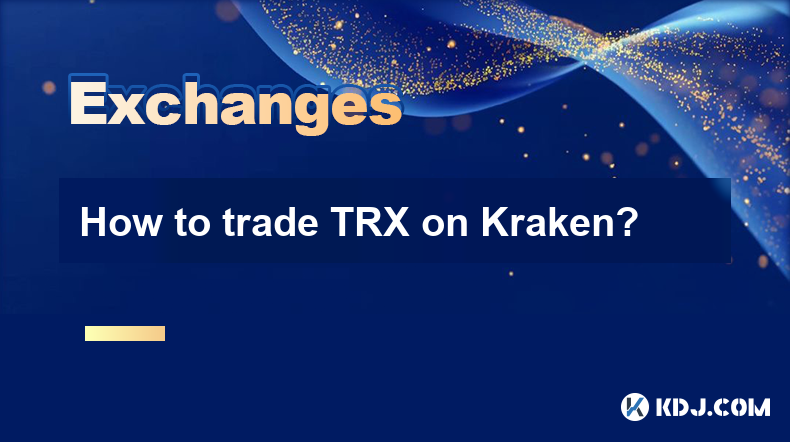
How to trade TRX on Kraken?
Apr 19,2025 at 02:00am
Trading TRX on Kraken involves several steps, from setting up your account to executing your first trade. Here's a detailed guide on how to get started and successfully trade TRX on the Kraken platform. Setting Up Your Kraken AccountBefore you can start trading TRX on Kraken, you need to set up an account. Here's how to do it: Visit the Kraken website a...
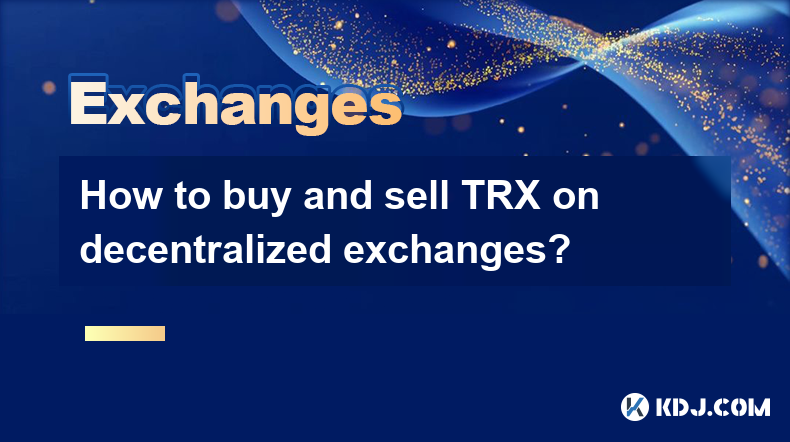
How to buy and sell TRX on decentralized exchanges?
Apr 18,2025 at 08:08pm
Introduction to TRX and Decentralized ExchangesTRX, or Tron, is a popular cryptocurrency that aims to build a decentralized internet and entertainment ecosystem. Decentralized exchanges (DEXs) offer a way to trade cryptocurrencies like TRX without the need for a central authority, providing greater privacy and control over your funds. In this article, w...
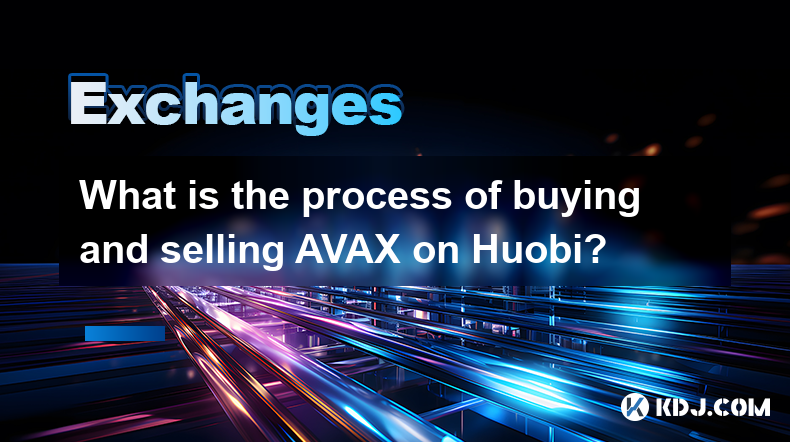
What is the process of buying and selling AVAX on Huobi?
Apr 18,2025 at 07:50pm
Understanding AVAX and Huobi Before diving into the process of buying and selling AVAX on Huobi, it's essential to understand what these terms mean. AVAX is the native cryptocurrency of the Avalanche blockchain, a platform designed for decentralized applications and custom blockchain networks. Huobi, on the other hand, is a leading global cryptocurrency...

Digital currency exchange trading volume and reputation ranking in 2025
Apr 18,2025 at 01:38pm
In 2025, trading volume and reputation have become the two key indicators for measuring the quality of the exchange. Trading volume reflects the activity and market acceptance of the exchange, while reputation represents the user's trust and security of the exchange. According to the latest statistics, the trading volume of global digital currency e...

Does SOL trading support DEX (decentralized exchange)?
Apr 19,2025 at 05:21am
Solana (SOL), a high-performance blockchain platform, has gained significant attention in the cryptocurrency community for its fast transaction speeds and low fees. One of the key aspects that traders and investors often inquire about is whether SOL trading supports decentralized exchanges (DEXs). In this article, we will explore this topic in detail, p...

How to sell TRX on OKX?
Apr 18,2025 at 11:07pm
Selling TRX on OKX is a straightforward process that can be completed in a few simple steps. This article will guide you through the entire process, ensuring that you understand each step thoroughly. Whether you are a beginner or an experienced trader, this guide will help you navigate the OKX platform with ease. Preparing to Sell TRX on OKXBefore you c...

How to trade TRX on Kraken?
Apr 19,2025 at 02:00am
Trading TRX on Kraken involves several steps, from setting up your account to executing your first trade. Here's a detailed guide on how to get started and successfully trade TRX on the Kraken platform. Setting Up Your Kraken AccountBefore you can start trading TRX on Kraken, you need to set up an account. Here's how to do it: Visit the Kraken website a...

How to buy and sell TRX on decentralized exchanges?
Apr 18,2025 at 08:08pm
Introduction to TRX and Decentralized ExchangesTRX, or Tron, is a popular cryptocurrency that aims to build a decentralized internet and entertainment ecosystem. Decentralized exchanges (DEXs) offer a way to trade cryptocurrencies like TRX without the need for a central authority, providing greater privacy and control over your funds. In this article, w...

What is the process of buying and selling AVAX on Huobi?
Apr 18,2025 at 07:50pm
Understanding AVAX and Huobi Before diving into the process of buying and selling AVAX on Huobi, it's essential to understand what these terms mean. AVAX is the native cryptocurrency of the Avalanche blockchain, a platform designed for decentralized applications and custom blockchain networks. Huobi, on the other hand, is a leading global cryptocurrency...

Digital currency exchange trading volume and reputation ranking in 2025
Apr 18,2025 at 01:38pm
In 2025, trading volume and reputation have become the two key indicators for measuring the quality of the exchange. Trading volume reflects the activity and market acceptance of the exchange, while reputation represents the user's trust and security of the exchange. According to the latest statistics, the trading volume of global digital currency e...
See all articles
























































































